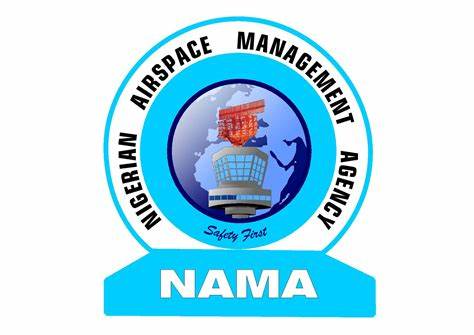The Nigerian Airspace Management Agency (NAMA) has said, the successful test of the Satellite Based Augmentation System (SBAS) would enhance safety, efficiency and capacity of the Air Traffic Management system in the country.
Speaking in Abuja after a successful test flight of SBAS flight procedure using the agency’s calibration aircraft, the acting managing director of NAMA, Matthew Pwajok, said the system would increase the efficiency of the airlines through reduced flight time, turnaround time, fuel consumption, reduced workload for both pilots, air traffic controllers and increased profitability over time.
According to him, NAMA’s resolve to constantly upgrade navigational infrastructure in the country was borne out of the determination to enhance safety, improve operational efficiency of airlines and increase their profitability through reduced operational costs.
He, however, recalled that, NAMA had earlier implemented PBN in 32 airports including military, private, state government as well as federal government airports.
“The whole essence of the SBAS is to improve on the integrity, accuracy, availability and continuity of the PBN signals by deploying a ground infrastructure or a master station that receives signals from several satellites, triangulates them and takes the best location before broadcasting it globally to be received by any aircraft within that airspace.
“So, we have done PBN that provides lateral guidance needed to locate an airport but we have gone a step further to improve on it by implementing precision approaches using the satellite provided by Nigerian Communications Satellite (NIGCOMSAT),” he stressed.
Explaining further, Pwajok said: “while PBN provides lateral guidance for the aircraft to locate an airport, SBAS would provide improved accuracy, improved integrity of the signals, improved availability and continuity of the signals as it collects information from several signals or satellites rather than an aircraft using just one signal from a GPS to fly. So, the samples from several satellites would improve on the indication of accuracy.
“Aircraft can then use it for improved accuracy in approach and landing, improved accuracy in flying en route, and improved accuracy in even descent profile as it provides us with the capacity to give aircraft lateral guidance, and vertical guidance either for approach and landing or take-off and climb for enroute flight. By this, it has helped us to maximize the use of limited airspace and that reduces what we refer to as controlled flights into terrain.”
He maintained that an aircraft would not require more than a retrofit for those that have been flying PBN, saying it won’t be capital-intensive for an airline to acquire a retrofit.
He stated further that the cost-effectiveness of satellite navigation, SBAS would improve the economies of airlines in the long run.
The NAMA helmsman added that, “the SBAS would be a win-win situation for airlines because over time they have been focusing attention on reducing cost and increasing profitability and this innovation will surely be of immense benefit to them in that regard.”
He also allayed insinuations that the agency will be phasing out Instrument Landing Systems (ILS).
We’ve got the edge. Get real-time reports, breaking scoops, and exclusive angles delivered straight to your phone. Don’t settle for stale news. Join LEADERSHIP NEWS on WhatsApp for 24/7 updates →
Join Our WhatsApp Channel










